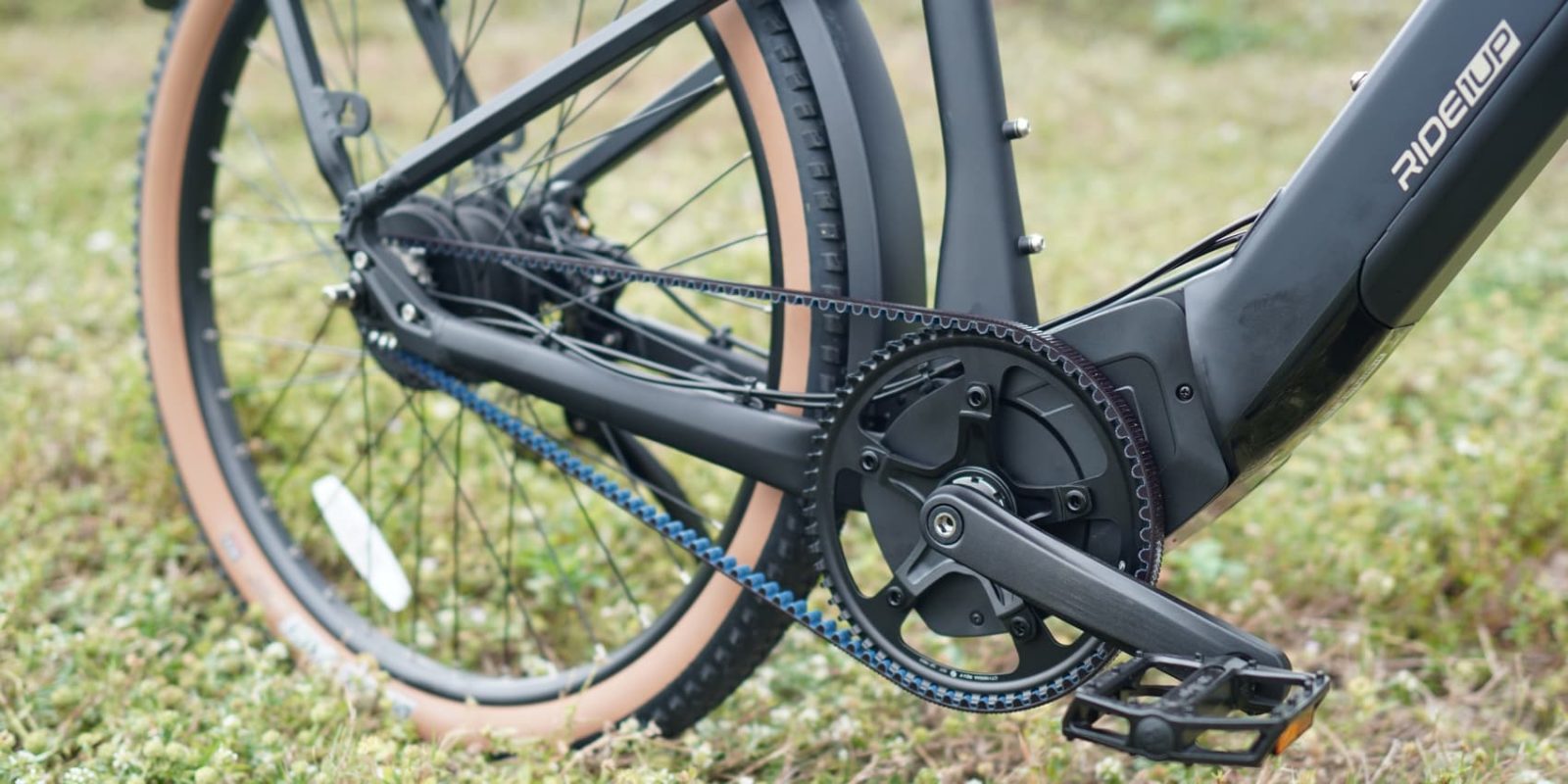
When Ride1Up launched the Prodigy V2, they kept all the parts that made this Brose-powered mid-drive great and added even more components (like a Gates belt drive system!) to make this e-bike one of the best deals in mid-drive electric bicycles.
Sure, it’s not going to kick a Specialized’s tail, but it’s going to get you surprisingly close for around half the cash, and that’s impressive!
Though perhaps it shouldn’t come as a total surprise, as that’s been Ride1Up’s game plan for as long as I’ve been riding their bikes – which is roughly as long as they’ve been making bikes. The company has always sought to provide most of what you can get from higher-priced electric bike models, yet at a much more affordable price.
When it comes to the Ride1Ip Prodigy V2, I’d say they’ve just about nailed it. Don’t believe me? Watch my testing video below to see it in action!
Ride1Up Prodigy V2 video review
Ride1Up Prodigy V2 tech specs
- Motor: Brose TF Sprinter mid-drive (90 Nm of torque)
- Top speed: 28 mph (45 km/h)
- Range: 30-50 miles (50-80 km)
- Battery: 36V 14Ah (504Wh)
- Weight: 58 lb (26.3 kg)
- Load capacity: 300 lb (136 kg)
- Frame: Aluminum alloy
- Brakes: Tektro quad-piston hydraulic disc brakes
- Extras: Brose color display, front and rear LED lights, included high-quality rack and fenders, 100mm air suspension fork, Maxxis tires, kickstand
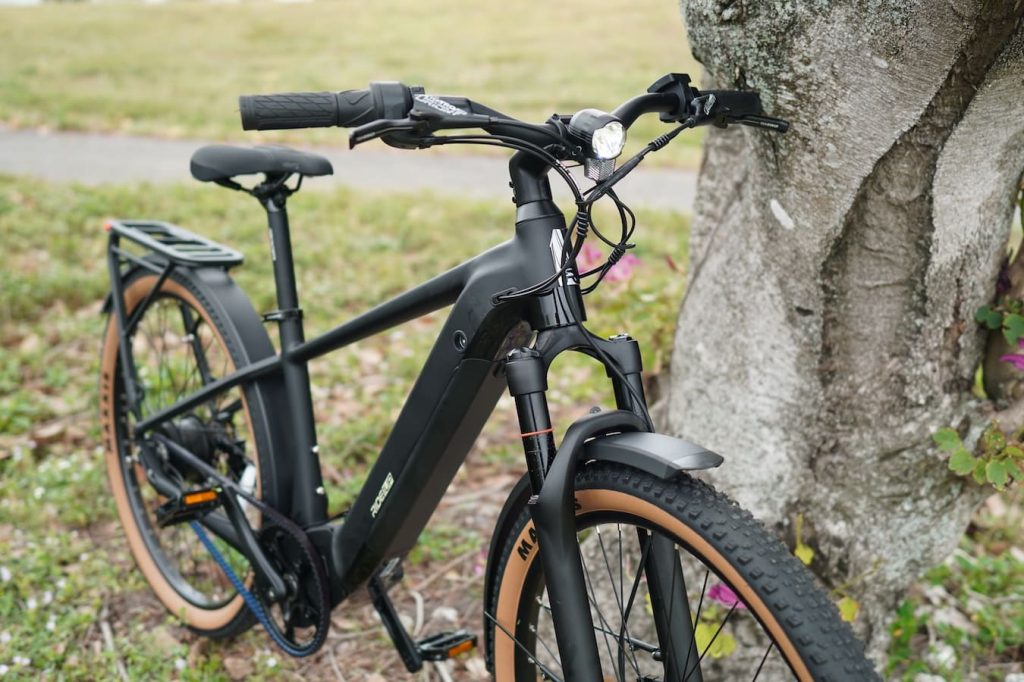
Even better than before!
Ride1Up describes the Prodigy V2 as “The successor to the industry-disrupting Prodigy mid-drive e-bike,” and that’s pretty darn accurate. The original Prodigy entered the market as a disruptor by offering the same mid-drive motor and several of the same level components seen on much pricier bike shop e-bikes. Now the second generation of the Prodigy is here to do the same thing again, just better.
And now there are actually two versions of the Ride1Up Prodigy V2. The main difference is the drivetrain, with the $2,395 version featuring a microShift Advent 9-speed chain drive and the $2,695 version including a Gates Carbon Drive and Eniovlo hub to create a belt-drive CVT drivetrain.
Both are available in a step-over or a step-through. I tested the belt drive in a step-over frame, which is known as the LX model.

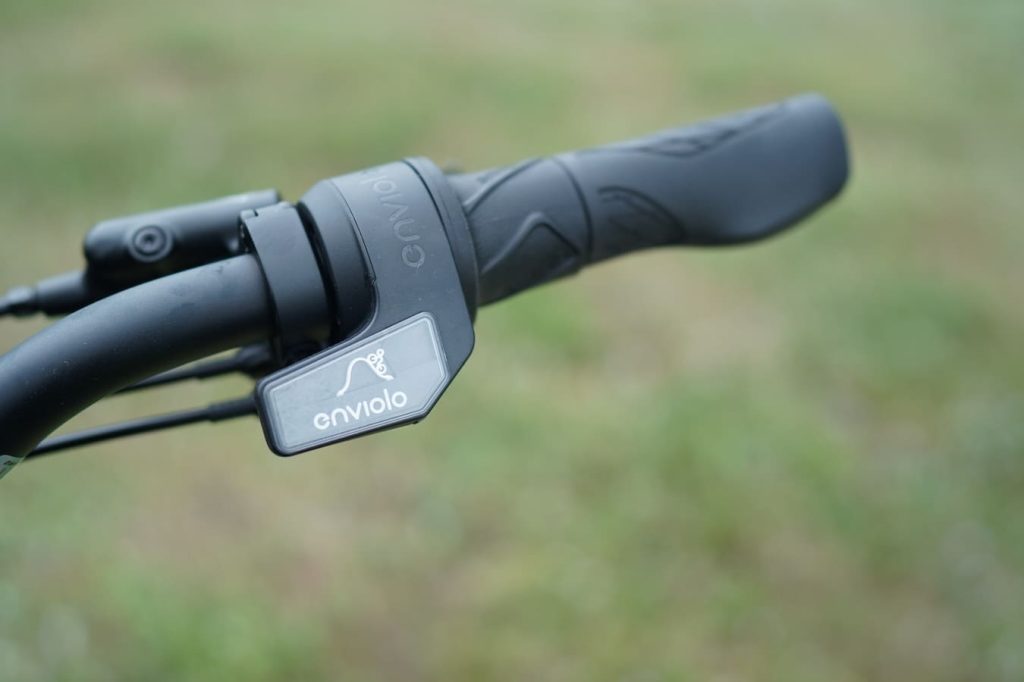
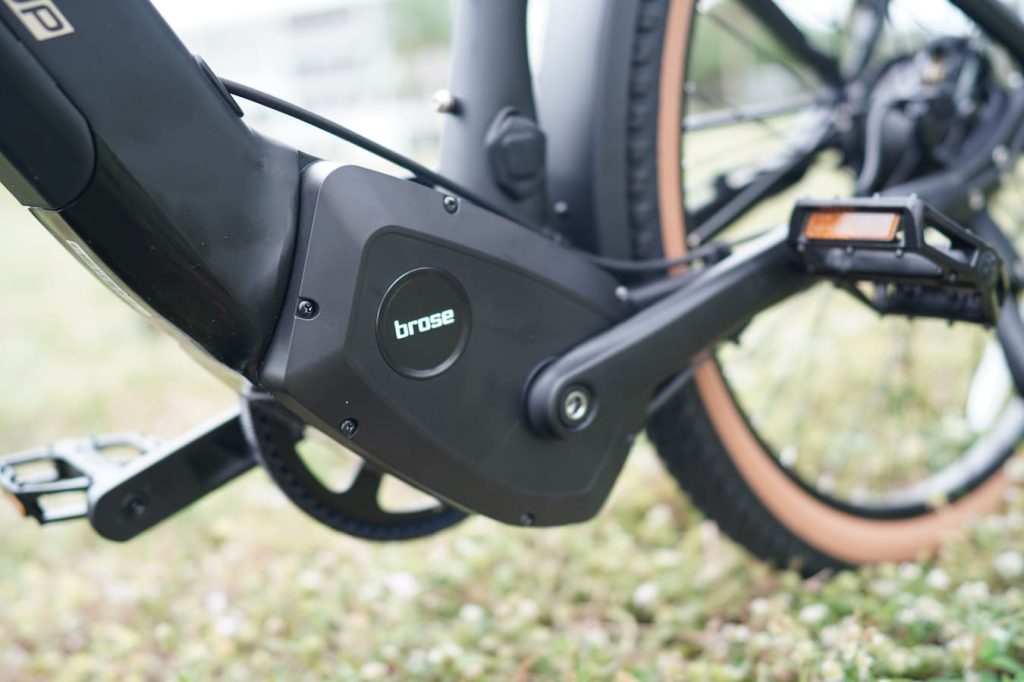

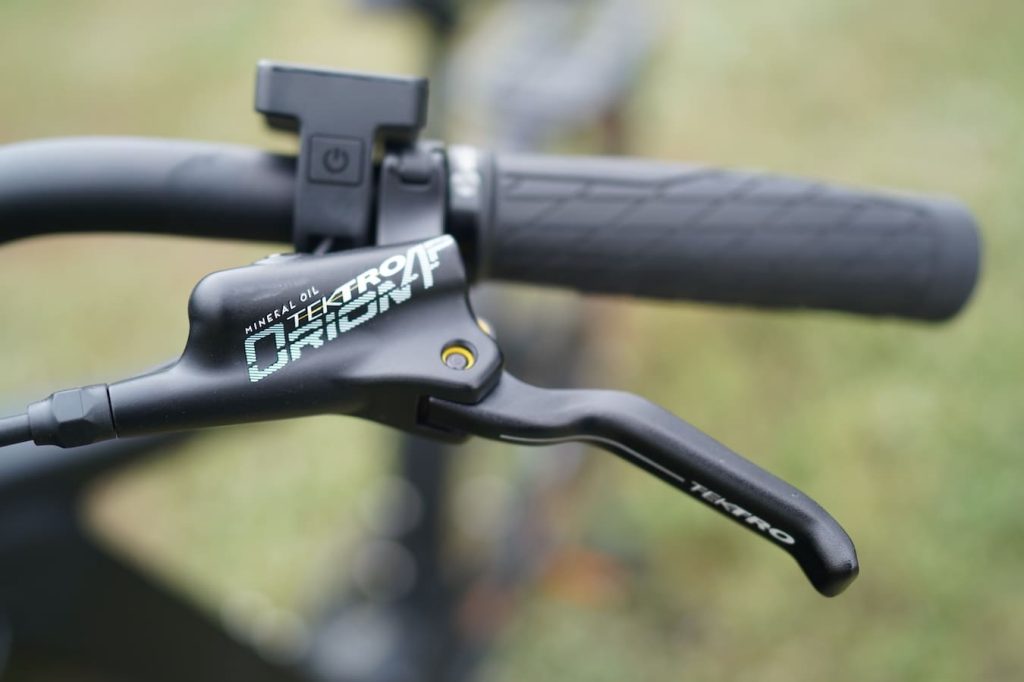
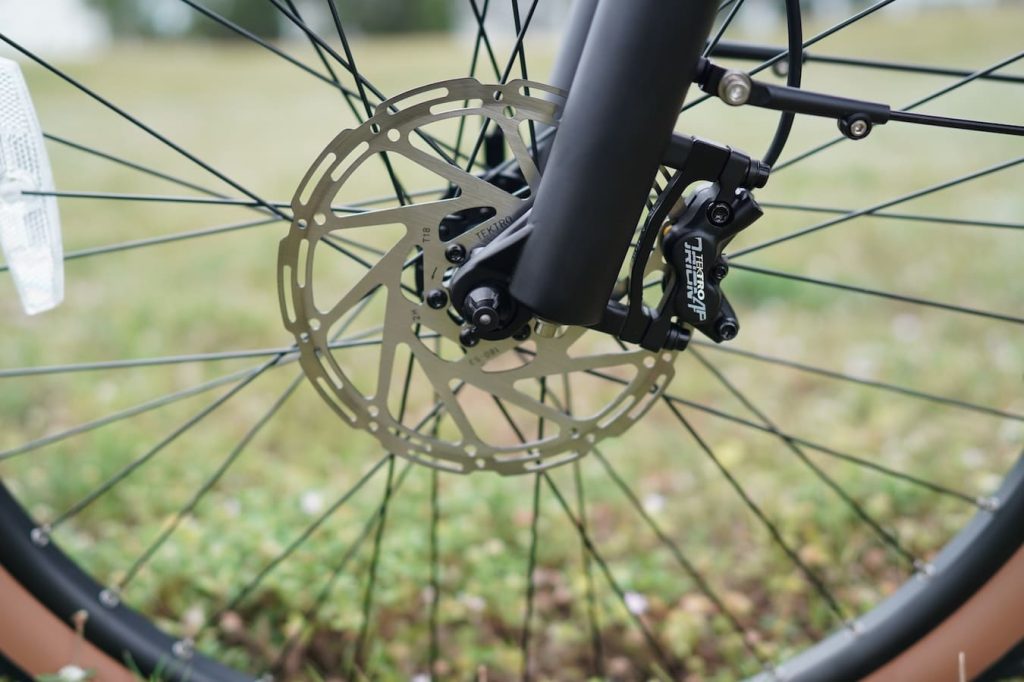
This is probably more bike than most Ride1Up customers are used to, especially since the price tag is twice what most of Ride1Up’s models cost. But then again, it’s half the price of the bikes it is actually competing against, and that’s the real message here.
With a Brose TF Sprinter motor that features 90 Nm of torque and a built-in torque sensor, you’re getting a powerful motor that not only climbs hills and accelerates quickly, but also pedals beautifully. That torque sensor creates a better feeling pedal assist – as if the bike isn’t actually electric but rather just an extension of your own pedaling.
Because I was on the belt drive version, the bike was also super smooth and and even quieter. There’s no chain noise or derailleur clicking. There’s just you and the wind rushing past your ears. The Enviolo CVT hub handles the shifting, though I find that the gear range is a bit wide, meaning I have to lift my hand off the shifter and take a new grip on it to shift the range from low to high. The good news is I’m almost never doing that, since I find that the upper half of the shifting range is all I really use. That lower range is probably good if you’re going to climb up the side of a mountain, but that’s not my typical riding.
The bike is also plenty fast, too. As a Class 3 e-bike, it can hit speeds of up to 28 mph (45 km/h), which is the maximum legal limit for e-bikes in most jurisdictions in the US. There’s no throttle, so you’re on your own to hit that 28 mph with your own feet guiding the way (or even 20 mph, if you leave it in Class 2 mode). But the bike is a pleasure to ride and so you’ll likely find that you don’t miss the throttle as much as you might think. At least, that’s exactly how I felt.

The 504 Wh battery isn’t particularly large, and I’d even say it’s a bit smaller than most batteries in the direct-to-consumer electric bike market right now. But then again, there’s no throttle here and so you’re going to be riding more efficiently anyway.
That means you’ll probably feel like you’ve got a 750 Wh battery instead, resulting in that impressive range rating of 30-50 miles. Of course, if you ride at 28 mph the entire time, you could dip below that figure. But it’s going to be hard to get less than 30 miles of range during most real-world scenarios. Folks that have enough self-control to leave it in lower power pedal assist will find that they get considerably more range, too.
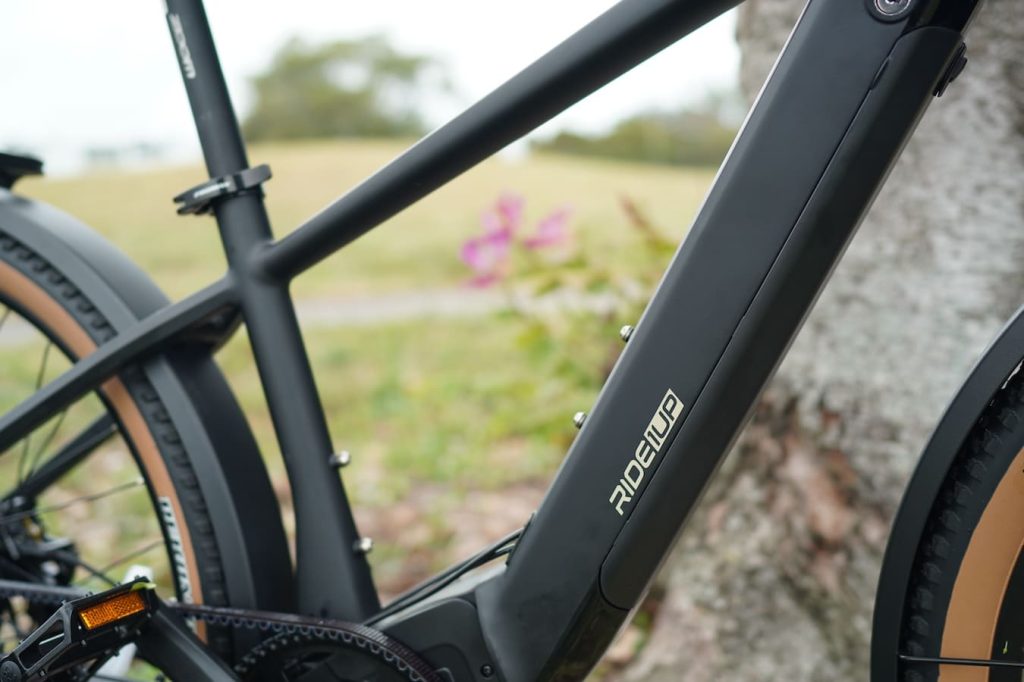
Now, the bike did seem to get a bit heavier with this update. Compared to the V1 Prodigy, this new version gained between 8 to 11 pounds depending on the model.
The new 58 lb or 61 lb weights are a bit more portly than the original 50 lb semi-svelte offering from a couple years ago. That’s chunky, but not unmanageable. If you’ve been around the e-bike industry as much as many of us have, you’re used to a 60 lb e-bike.
And one other area that seemed weirdly lower-shelf to me was that the front axle uses a quick-release skewer axle, as opposed to a full thru-axle (which can also be sourced in quick-release, if folks want that style). Skewer axles are fine, but they’re not as robust as thru-axles. That’s why they are usually found on more budget-friendly bikes.
I would have expected to see a thru-axle like they had on the previous generation Prodigy XC. But alas, the quick-release skewer axle will have to suffice.

Axles aside, what really makes this bike standout isn’t just the Brose motor, Gates carbon drive, or even the CVT transmission. It’s all the other fine touches. That rear rack floats over the rear wheel and looks like it belongs on a bike shop quality bike – not a direct-to-consumer bike. It even has a slickly integrated tail light right in the rack’s deck, ensuring there’s one less thing to bash on a bike rack. The quad-piston disc brakes are punchy and quick to bring you to a silent, controlled stop. The 100 mm travel air fork is fun for off-road riding and will also help absorb any errant potholes you fail to shimmy around.
To sum it up, you’ve got a lot of bike for your money. That German-made motor isn’t cheap, and neither are the quad-piston disc brakes, the Enviolo CVT hub, nor the long travel air suspension fork. But you’re also not paying the property taxes of your local bike shop either, meaning you’re getting the benefits of direct-to-consumer pricing combined with higher-end kit.
To me, the Ride1Up Prodigy V2 feels like a major win. It’s more than many people will need, but for folks that want the higher performance and more natural feel of a quality mid-drive motor combined with higher-shelf bike components, this is probably the most affordable way to get there.
FTC: We use income earning auto affiliate links. More.




Comments